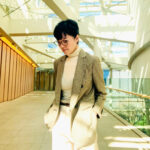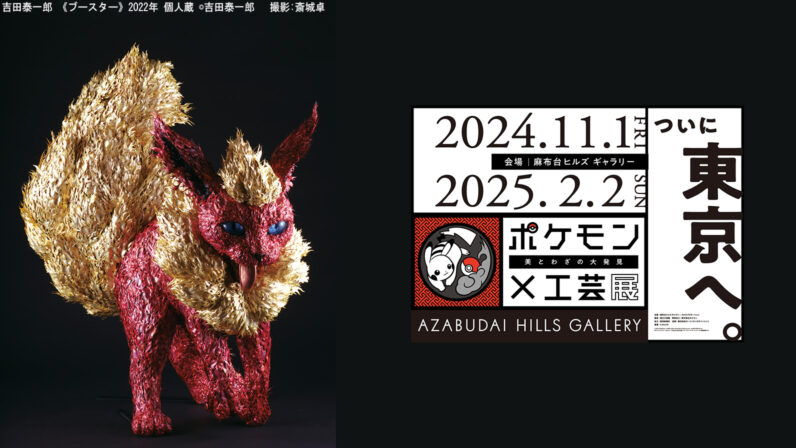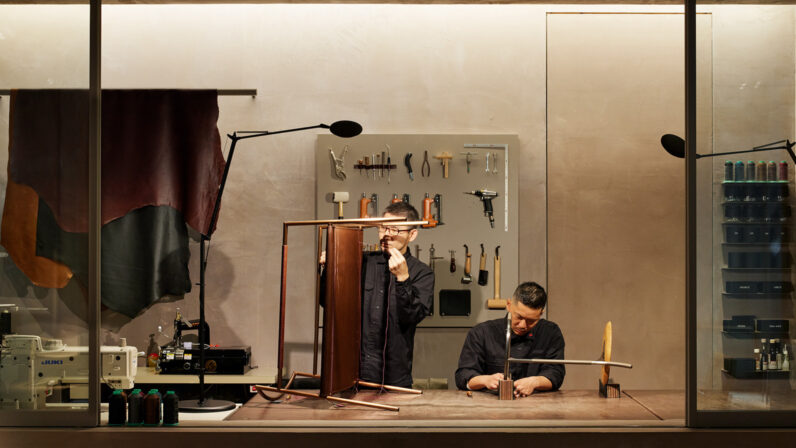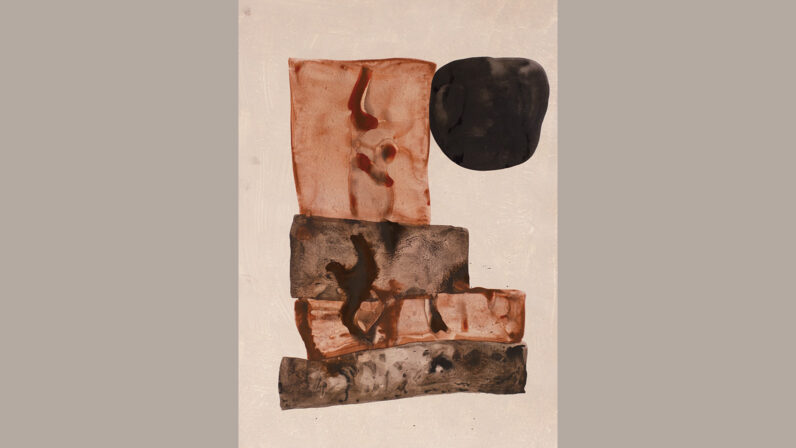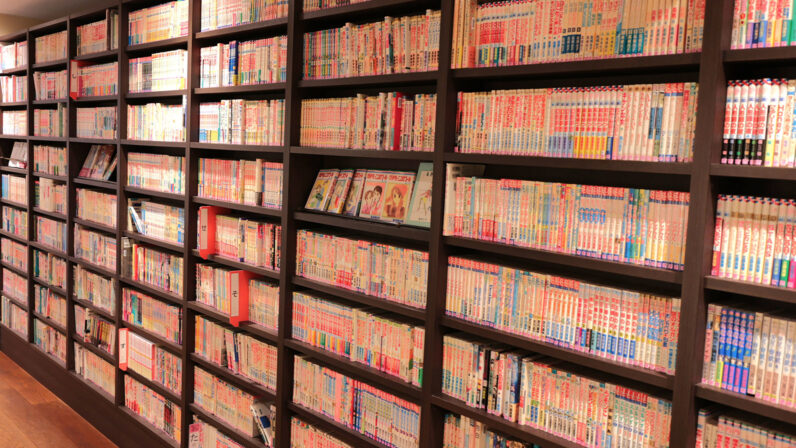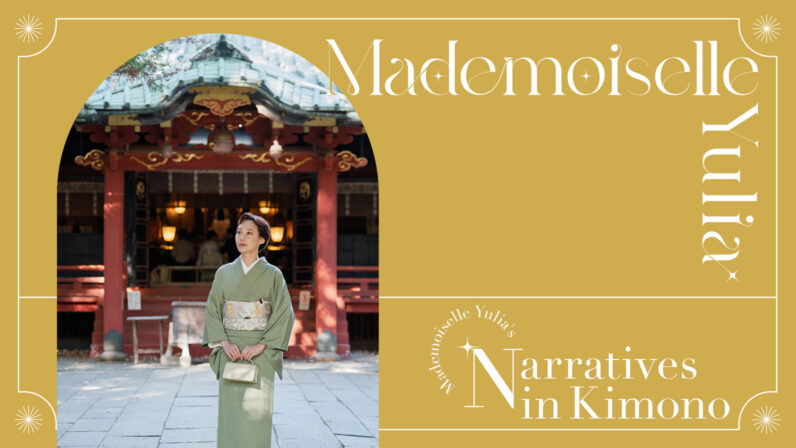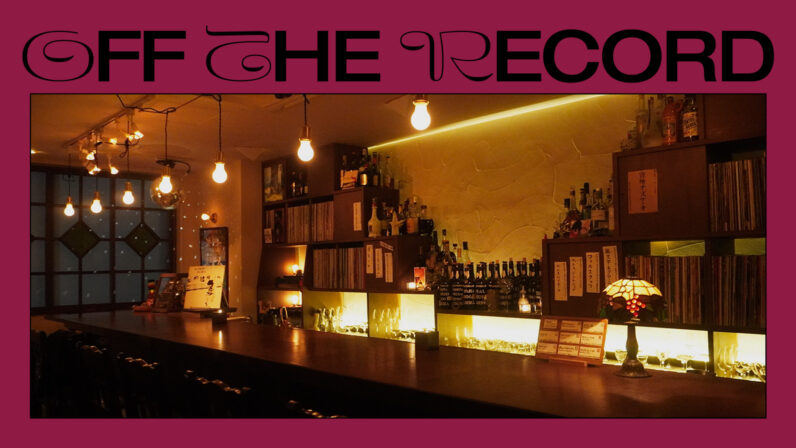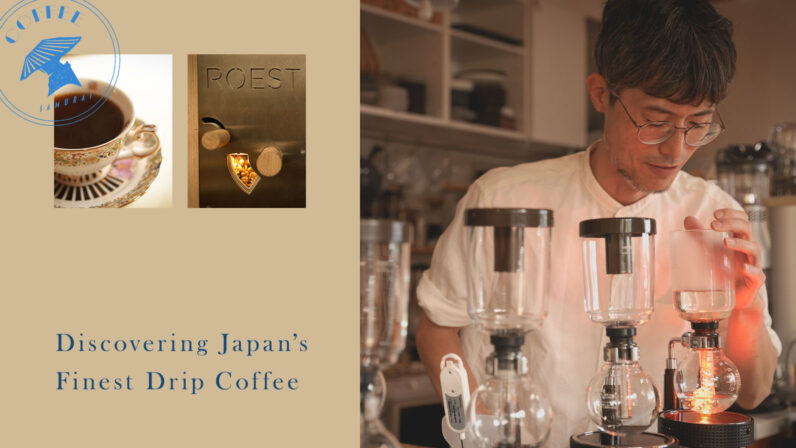Mademoiselle Yulia is a multifaceted talent—she is active in the fashion scene as a DJ while also producing her own kimonos. In this series, Yulia, who is well-versed in art and architecture, visits her favorite spots and discusses how she coordinates kimonos that harmonize with the surroundings.
In this volume, she explores the International Library of Children’s Literature at the National Diet Library, established in the Meiji period and following the Renaissance style lineage. Dive into the classic charm of the library and the enchanting world of picture books enhanced by Yulia’s summer kimono ensemble.
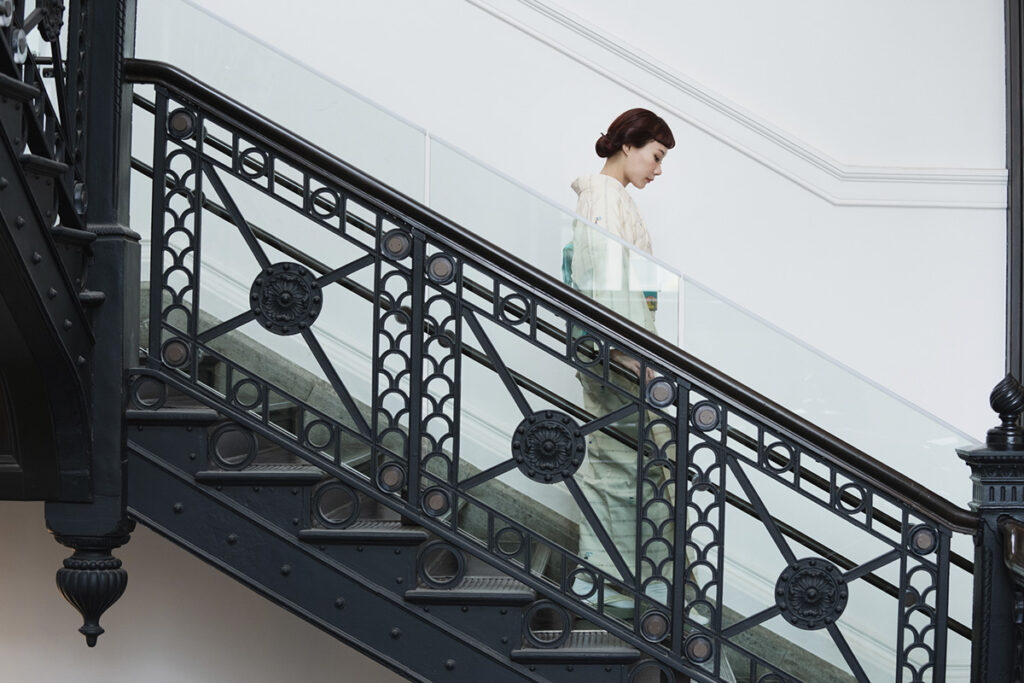
The geometric relief on the grand staircase of the brick building speaks volumes about the avant-garde spirit of its time, serving as a symbol of the International Library of Children’s Literature
A Library Hailed as the Pinnacle of Renaissance-Style Architecture in the East
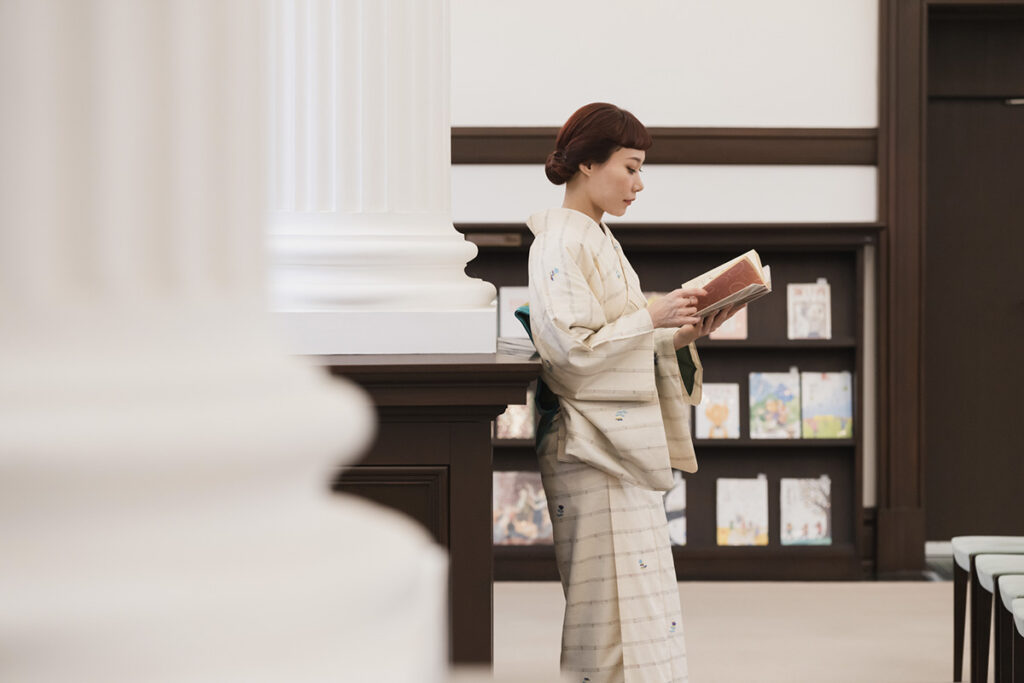
At the Children’s Book Gallery, tracing the history of Japanese children’s books from the Meiji era to the present. “I can’t help but be mesmerized by the beauty of woodblock illustrations and book designs.” remarks Yulia.
Passing through the lush greenery of Ueno Park, home to numerous architectural landmarks, Yulia arrived at the International Library of Children’s Literature within the National Diet Library. The focal point is the building now known as the ‘Brick Building,’ originally established in 1906 (Meiji 39) as the Imperial Library. Designed with ambitions to rival the greatest libraries in the East at the time, its grand scale overwhelms when standing at its main entrance. Architect Masamichi Kuru, a former official of the Ministry of Education, alongside his colleagues, spent nearly a year studying state-of-the-art large public libraries in early 20th-century America, including the U.S. Library of Congress in Washington, the Boston Public Library, and the Newberry Library in Chicago, sketching out blueprints for inspiration.
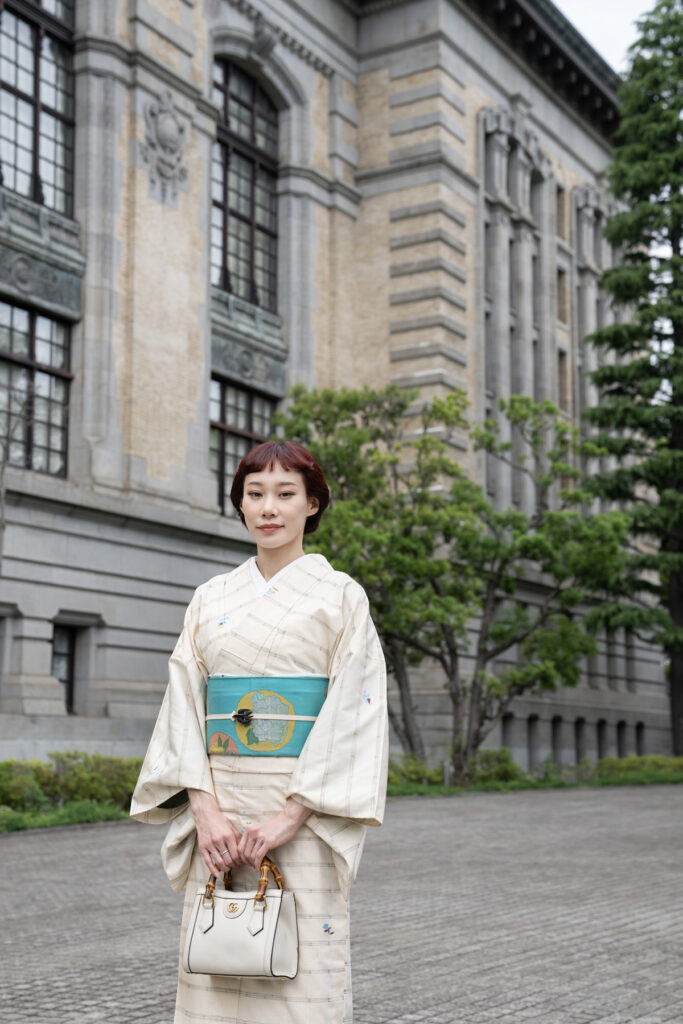
The segmental arch windows, designed to span multiple floors, add a dynamic touch to the building’s design.
The finished building, constructed in the Renaissance style, was made with a construction method commonly used during the Meiji Era called ‘steel framework with brick cladding.’ As you enter, the impressive facade with its series of massive segmental arch windows gives way to an interior with a breathtaking 20-meter high ceiling. A grand staircase, adorned with heavy cast iron railings, adds to the building’s majestic atmosphere.
“I was surprised to learn that these railings were brought from the United States. The contrast between the sturdy, geometric staircase decorations and the curved doors on the landings is also a standout feature of the building.” explains Yulia, a frequent visitor.

As you ascend the grand staircase, you’ll find a gracefully arched zelkova wood door, original to the building, standing elegantly on the landing.

In the past, push-to-open doors were rare, so the words ‘push’ and ‘open’ were specifically engraved on a plate.
During the rapid modernization of the Meiji era, marked by a strong embrace of Western architecture, the International Library of Children’s Literature stood as a pinnacle. The former VIP room (now known as ‘Meet The World’), stands out with elegant plaster decorations on the ceiling and boasts exquisite parquet flooring. In the former Special Reading Room (now the ‘Children’s Library’), Grecian-style columns with gracefully raised plaster patterns create an atmosphere fitting for a sanctuary of knowledge. This building, boldly integrating classical beauty with cutting-edge technology of its time, has been meticulously restored in stages to revive the essence of the Meiji era, welcoming visitors with its historical splendor.
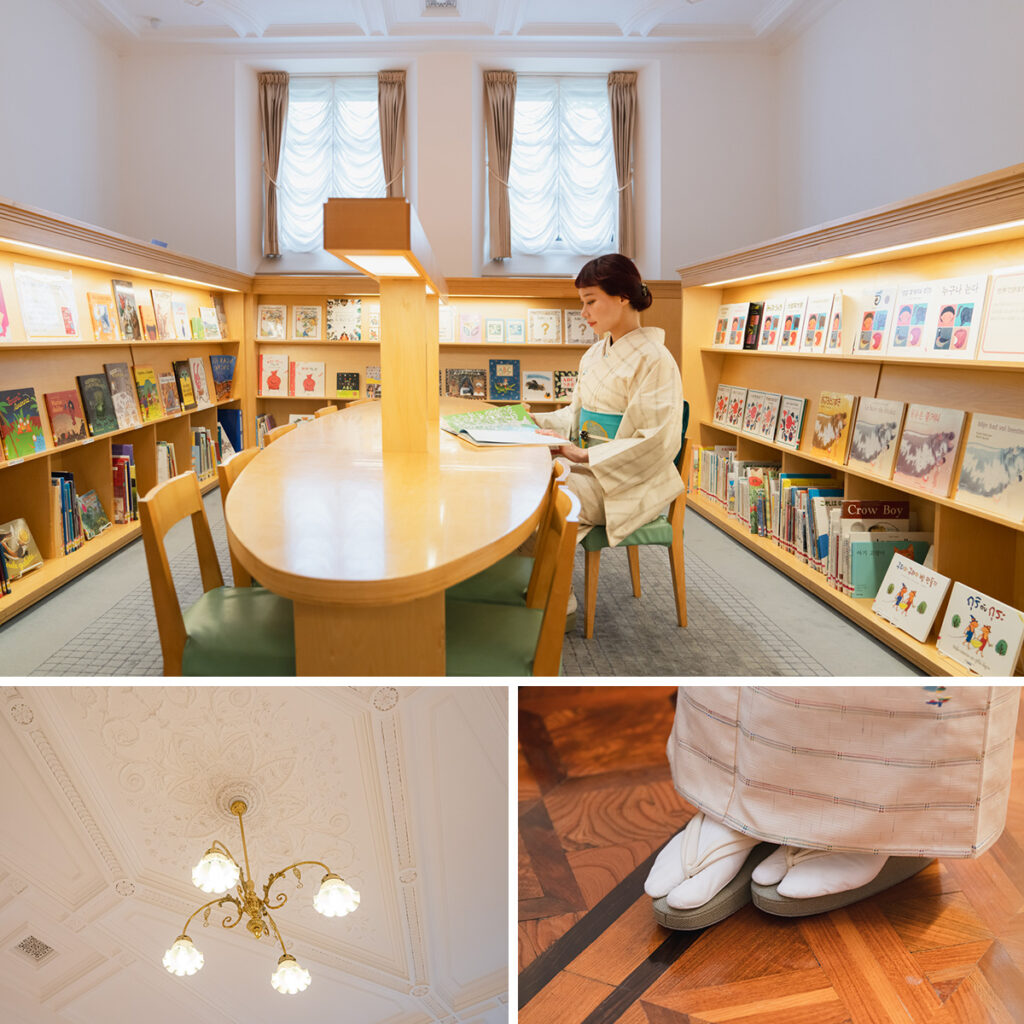
The former VIP room at the back of the first floor features trowel paintings on the ceiling, meticulously crafted by skilled artisans. The craftsmanship extends to the parquet flooring, which combines three types of wood panels.
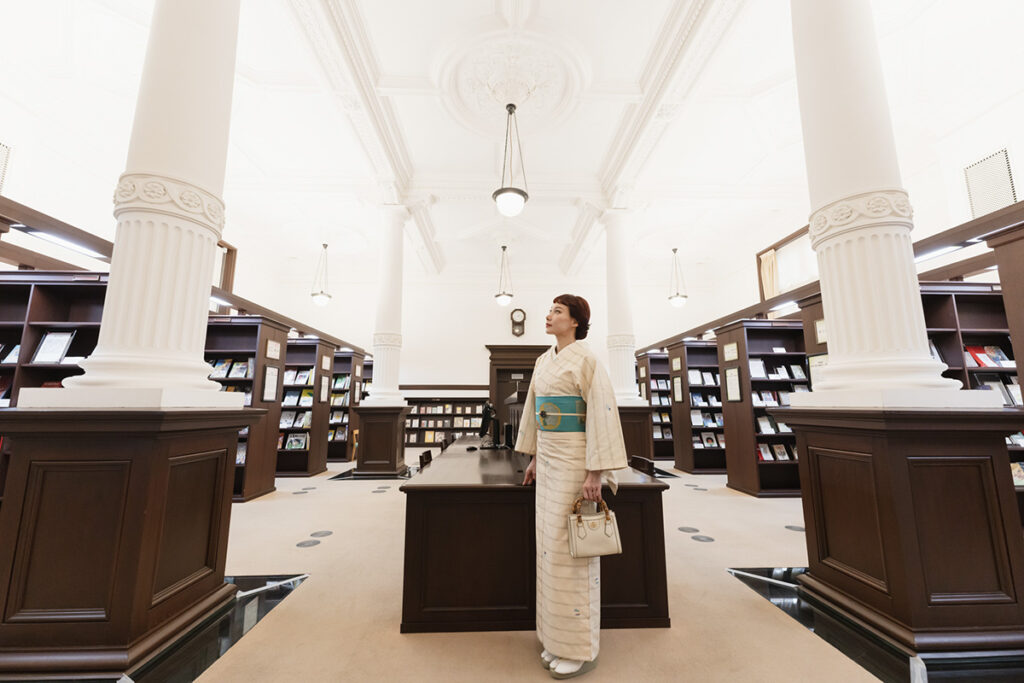
The columns of the former Special Reading Room are adorned with bamboo-woven ‘Takekomai,’ creating subtle raised patterns that accentuate their design.
The brick building, reflecting the flourishing elegance of the Meiji period, incorporates a distinctive structure resembling partially enclosed glass cases throughout. On the first floor, glass boxes adorn the entrance area and cafeteria, while on the west side, two concrete shafts intersect with additional glass boxes. Alongside its design, seismic isolation devices are installed underground. A new glass-covered arch building on the courtyard surface now houses the collection of books once stored underground. Architect Tadao Ando led the reconstruction of this cultural heritage, and the revitalized structure seamlessly blends modern architectural culture with the preservation of historic Meiji architecture, ensuring the continuity of aesthetic values from past to future.
This sentiment also resonates with Yulia, and when reflecting on this she expressed “Rather than simply preserving old elements, I believe in respectfully revitalizing them, much like I approach designing my kimono attire.”

Looking up from the courtyard side, you can see that the original exterior walls are designed to be protected by glass cases.
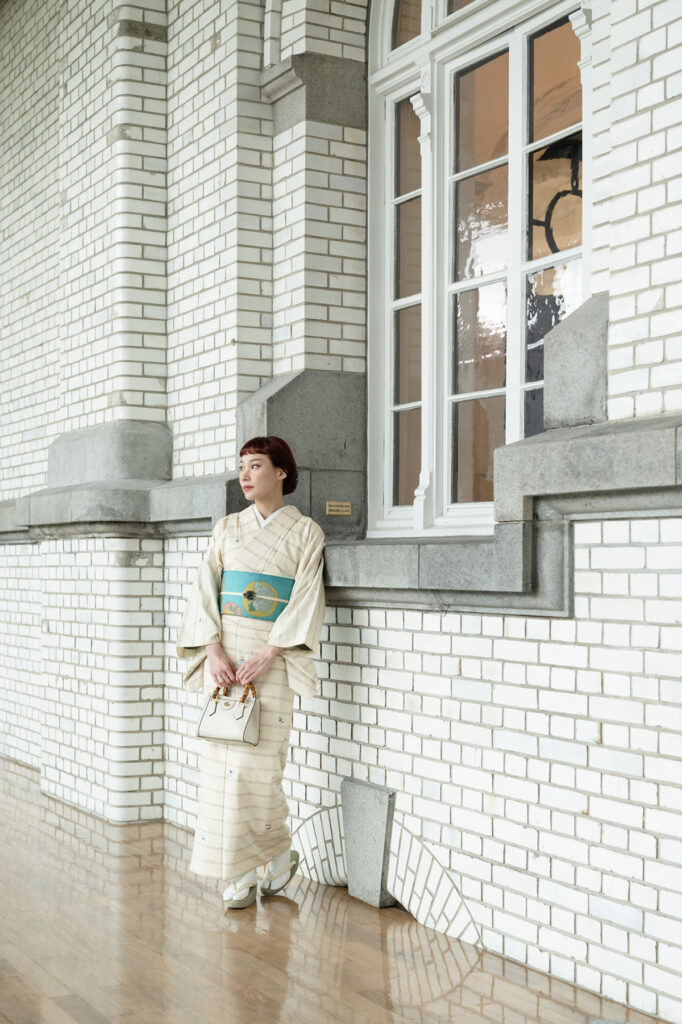
Yulia particularly enjoys this place where the white glazed bricks and white Tamba stones are beautifully arranged, once part of the former exterior walls.
An Outfit with Nostalgic Essence, Adorned with a Dance of Rainbow-Colored Flowers

In the Children’s Room, dedicated to books for preschool children, Yulia picks up familiar books that have been passed down and cherished for generations with a nostalgic smile.
The building, originally established as the Imperial Library during the Meiji era, underwent several transformations before reemerging in the year 2000 as a specialized library supporting children’s reading initiatives. Despite its distinguished historical significance, it was redesigned to house books and foster the future of children. Yulia selected a cream-colored kimono woven with a light and airy pattern resembling colorful tulip-like flowers.
“Various threads in red, yellow, turquoise blue, and green create delicate horizontal stripes like a rainbow. These colors instantly drew me to this kimono as they evoke a world of imagination. The vibrant sky-blue obi, woven with peonies, thistles, and hydrangeas, exudes a retro charm that I felt perfectly suits this space.”
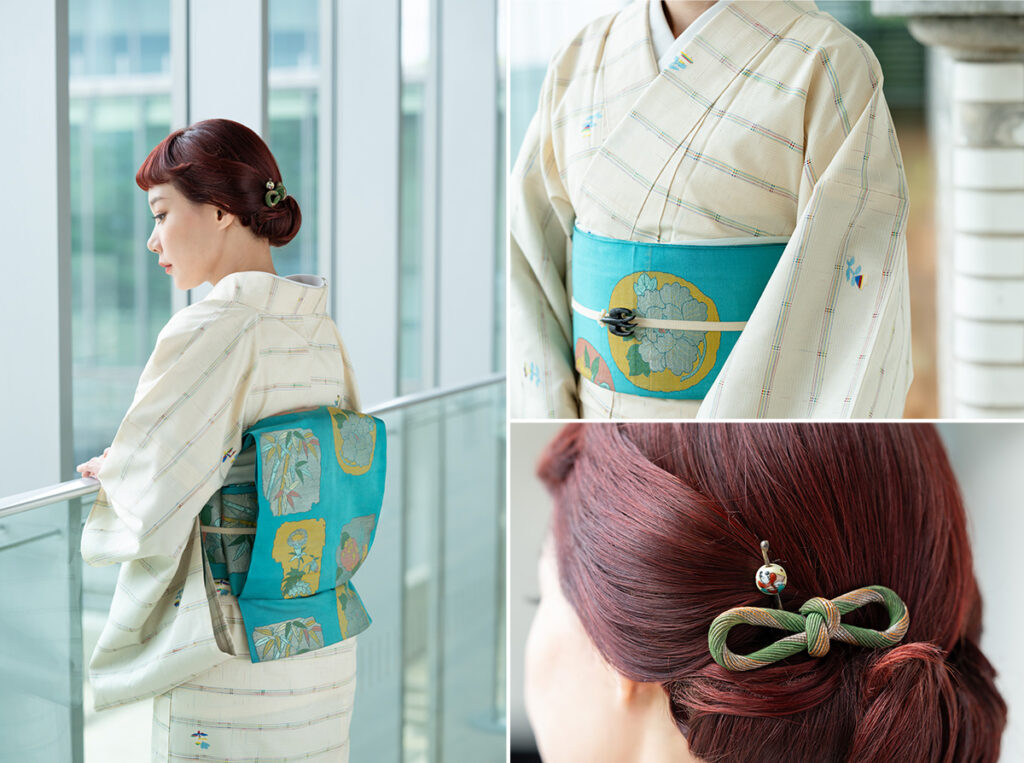
As the filming took place at the end of May, the obi clip featured swallows heralding early summer. The round hairpin dyed with Tang-style patterns subtly carries sentiments directed towards the space for children.
“I felt that this ensemble would also complement the architectural beauty and aesthetics of the building.”
The other outfit features a silk fabric echoing geometric motifs from the staircase, paired with a kasuri-patterned dyed obi reminiscent of book cover designs. The obiage and obijime, evoking the early summer sky, are refreshing. As I gaze at Yulia standing behind the glass, exuding a presence filled with the nostalgic charm of yesteryears, I catch a glimpse of a side where within her refined demeanor, curiosity sparkles in her eyes like that of a young child.
With memories of childhood summers in tow, I encourage all to visit and experience the architectural splendor while basking in nostalgia.
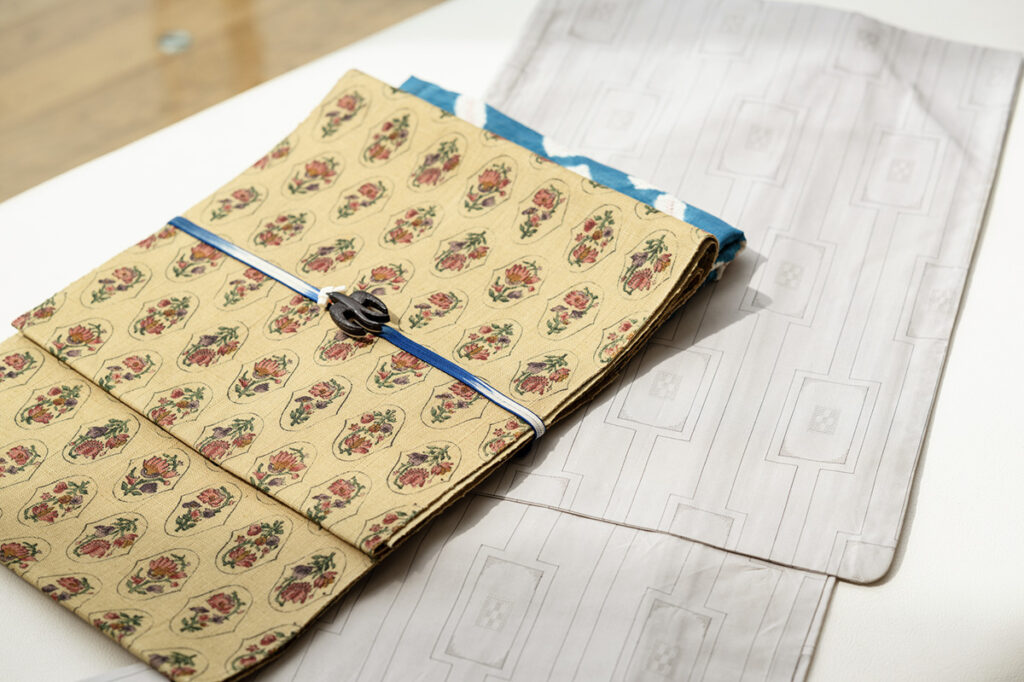
Another ensemble that combines architectural elegance with fond memories of classic library books.
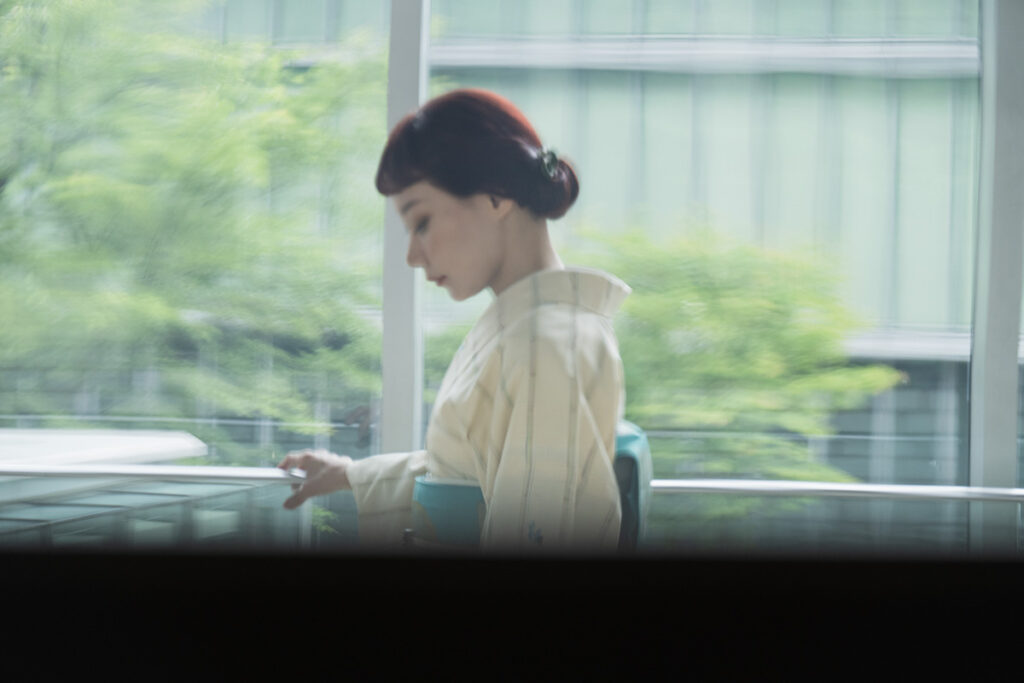
A window installed near the entrance of the Children’s Gallery, where the shimmering glass filters memories of childhood.

Mademoiselle Yulia
She began her career as a DJ and singer in her teens. Based in Tokyo, Mademoiselle Yulia is actively engaged globally, organizing kimono styling sessions, kimono workshops, and writing columns. In 2023, she co-founded the brand KOTOWA with friends to add stylish flair to everyday wear by incorporating kimono. She also runs a YouTube channel called ‘Yulia’s Room,’ where she uploads new content every week.
instagram: @MADEMOISELLE_YULIA
The location featured:
International Library of Children’s Literature, National Diet Library
Address: 12-49 Ueno Park, Taito-ku, Tokyo 110-0007, Japan
Phone: 03-3827-2053
Website: https://www.kodomo.go.jp/english/index.html

